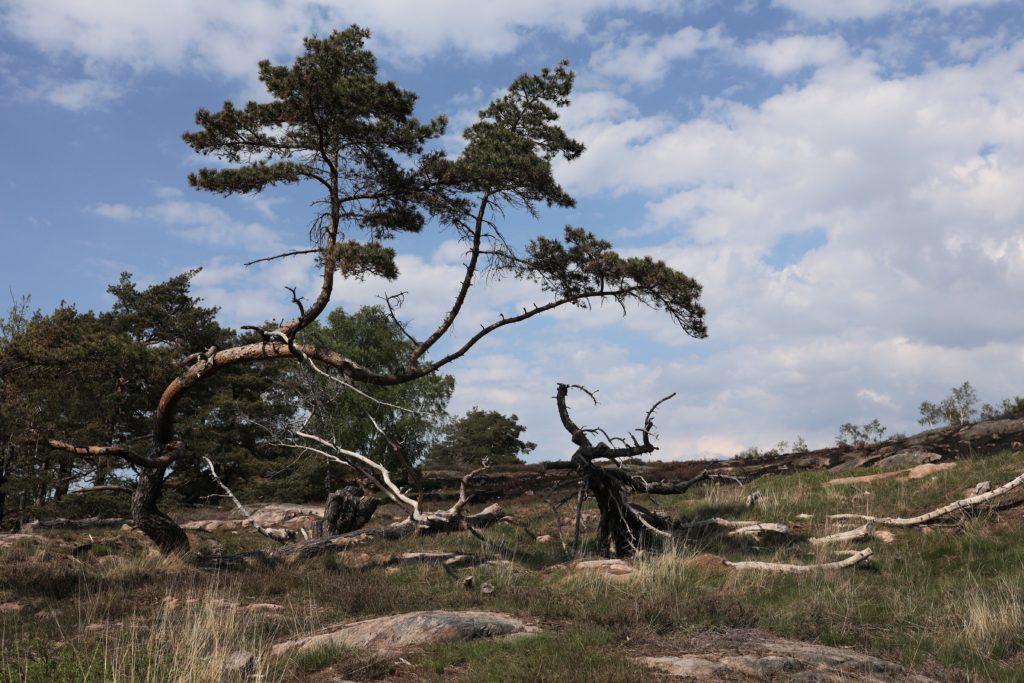
Sweden will not raise its ambition in pledges it makes within the EU’s biodiversity strategy. It had promised that 30 percent of species with an unfavourable status would get a better status by 2030 – a promise the government now plans to break.
On March 16, the Swedish government decided which commitments, i.e., promises, it should give in the work within the EU’s biodiversity strategy for 2030. According to documents that GP has seen, the government chose the least ambitious of three scenarios that the Swedish Environmental Protection Agency and the Norwegian Sea and Water Agency (HaV) presented. The scenario involves continuing the work as before.
“You can say that it is at the level we have been working with for the last, let’s say, ten years or so,” says Helene Lindahl at the Swedish Environmental Protection Agency.
At the same time, the money for general environmental and nature conservation is planned to decrease from 19.6 billion SEK this year to 8.6 billion SEK in 2026.
81 percent of habitat types and 63 percent of species in the EU’s Species and Habitats Directive and Birds Directive had poor or inadequate status in 2019. The directives state that member states are required to improve the status of all these species, but the biodiversity strategy sets a deadline for improving the status of 30 percent of them by 2030.
According to the commitments, Sweden will improve the status of 11.5 percent of the species and habitat types. The total figure is increased by the fact that it is expected to reach the target for species and habitat types linked to wetlands in scenario one.
Marie Stenseke, professor of cultural geography at the University of Gothenburg, is former co-chair of the multidisciplinary expert council of the international panel for biological diversity, IPBES. It is the biological diversity equivalent of the UN Climate Panel, IPCC.
“I'm disappointed,” she says. “We have to take responsibility here in Sweden, and we are a rich country so we can do it. It is a question of priorities. We must step in and reverse the trend if we expect countries with less financial resources to do so.”
She believes that Sweden, which was previously seen as a leading country, has lost its reputation.
“It is very worrying and it means that I am not as proud anymore when I work internationally and say that I am Swedish.”
“A disgrace”
30 percent of the EU's surface is protected. That goal is at EU level, which means that some member states can protect a smaller percentage of their surface while others protect more. Sweden will protect just under 18 percent of the surface according to the pledges, but can be expected to take on greater responsibility after the commission has compiled all countries' pledges, which should have been ready by the end of the year.
“It could be that Sweden has to take on more. The idea was that these meetings would be held this spring, but since almost everyone is late with their commitments, they should be held this fall,” says Helene Lindahl.
All EU member states have previously supported the strategy, which is not legally binding. In addition to Sweden, five of the EU's 27 member states have submitted their pledges, but Sweden and Cyprus have only done so for the goal of status improvements. Finland has asked to be given until the end of the year.
“The member countries can be taken to court if they don't follow the directives, but if you don't follow the strategy it becomes more of a shame,” says Helene Lindahl.
Sergiy Moroz is policy officer at the environmental organisation, European Environmental Bureau, EEB. He is critical of Sweden's ambitions but believes that it is not unique.
“It is disappointing, but we also see that other member states do not prioritise this. Most of them are late. Maybe it is because it is not legislated,” he says.

International responsibility for forests
Sweden has an international responsibility to protect its contiguous natural forests, and according to the EU's goals, these must be strictly protected. Many of them are found in the mountainous region.
"The natural forests in the area close to the mountains are part of one of the few intact forest landscapes that still remain in Europe. It is therefore of international interest that these natural forests are preserved to the greatest extent possible," says the Environmental Protection Agency's documentation for the commitments.
The forest investigation in 2019 suggested such forests should receive strict protection, and the Swedish Environmental Protection Agency suggested that these should be included in the Swedish pledges – which the government chose not to include.
“The Swedish Environmental Protection Agency can approve proposals and in this case we thought this would be a good way to contribute to achieving the goals,” says Helene Lindahl.
“It is a very unique and large area."
Concerns about new EU law
Josefin Olsson at the Government Office was one of those who signed the decision. She agrees that the government chose the least ambitious line.
“You can certainly state that it is. One reason is that there are other processes going on that you don't want to precede.”
One such process is the negotiations around a new regulation on the restoration of nature, the Nature Restoration Law, which Sweden is leading the negotiations on. The regulation is intended to complement previous directives to restore the nature of the EU by 2050.
Sweden aims to complete the negotiations in the Council of Ministers during the presidency. EEB are worried about whether it will become a law at all.
“We are less optimistic than before that we will get a law, or that it will be so weakened that it does not provide any additional value", Josefin Olsson says.
Romina Pourmokhtari: Sweden is not slowing down
Environment and Climate Minister Romina Pourmokhtari has previously said in an interpellation debate that "the government intends to actively oppose the extinction of species through the global work that takes place at the EU level, where Sweden in no way slows down but on the contrary uses the presidency to drive all the new positive development with which we can contribute" and that Sweden should "care for what we have already protected in order to improve the status of our nature types and species."
Josefin Olsson at the Government Office believes that there was a rush for Sweden to make a decision regarding the commitments.
“After all, there was a deadline that we had already passed and then it was decided that it was better to go in with commitments at the level that could be agreed upon rather than none at all", she says.
“These are preliminary commitments, so there may be reason to come back. The Commission can come up with new recommendations for Sweden and then we have to deal with it.”
When it comes to the natural forests worthy of protection, the government has not had time to make a decision either.
“It must first be prepared at the Government Office and you don't know what will actually go through there. There is no exact deadline for that.”
EEB requires greater progress
Both the Species and Habitats Directive and the Birds Directive existed before Sweden joined the EU in 1995. Sergiy Moroz is disappointed that they have been pointless.
“It is frustrating because these directives have existed since the 70s and 90s. In the best case, we would have had 100 percent good status on all species and habitat types by now. We need to see much more progress but the fact is they don't even prioritise 30 percent, which they can.”
At the same time, the climate and environment minister believes that they are working ambitiously to stop the extinction.
“But it's not. To me this [the pledges redd. note] do not say that you work ambitiously.”
We have sent questions to Climate and Environment Minister Romina Pourmokhtari without receiving an answer.
THE THREE SCENARIOS
Scenario 1: "Continued implementation scenario"
Same pace of site protection as the period 2000 to 2021. Equivalent funds as in 2021 for measures such as management.
Scenario 2: "Government lead scenario"
Based on what can be done by state authorities and companies within state land, water and activities and with increased resources beyond what is already included in scenario 1.
Scenario 3: "Needs-based scenario"
Reflects the total need for initiatives, including outside government land and water, to achieve the objectives of the EU Biodiversity Strategy 2030 in Sweden.
By: Ella Daneshmand, Sandra Daniel, Heino Ollin, Peter Seenan
This article is part of “Crossborder Journalism Campus”, an Erasmus+ project of the University of Gothenburg, Leipzig University and Centre de Formation des Journalistes in Paris. Additional reporting: Suzanne Vink
- Sweden abandons EU targets on biodiversity – draws strong criticism
- Sverige överger EU-mål om biologisk mångfald – väcker stark kritik
